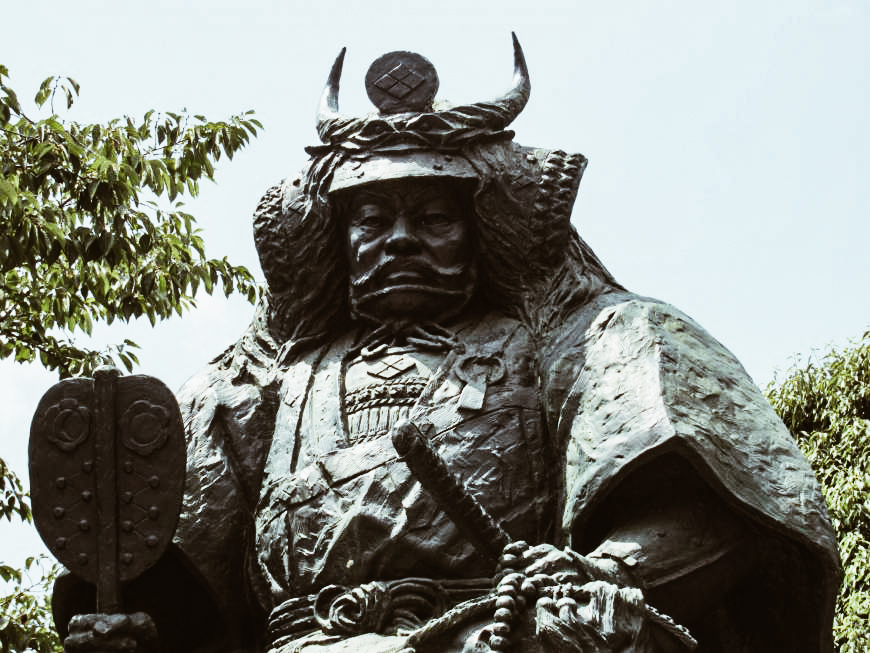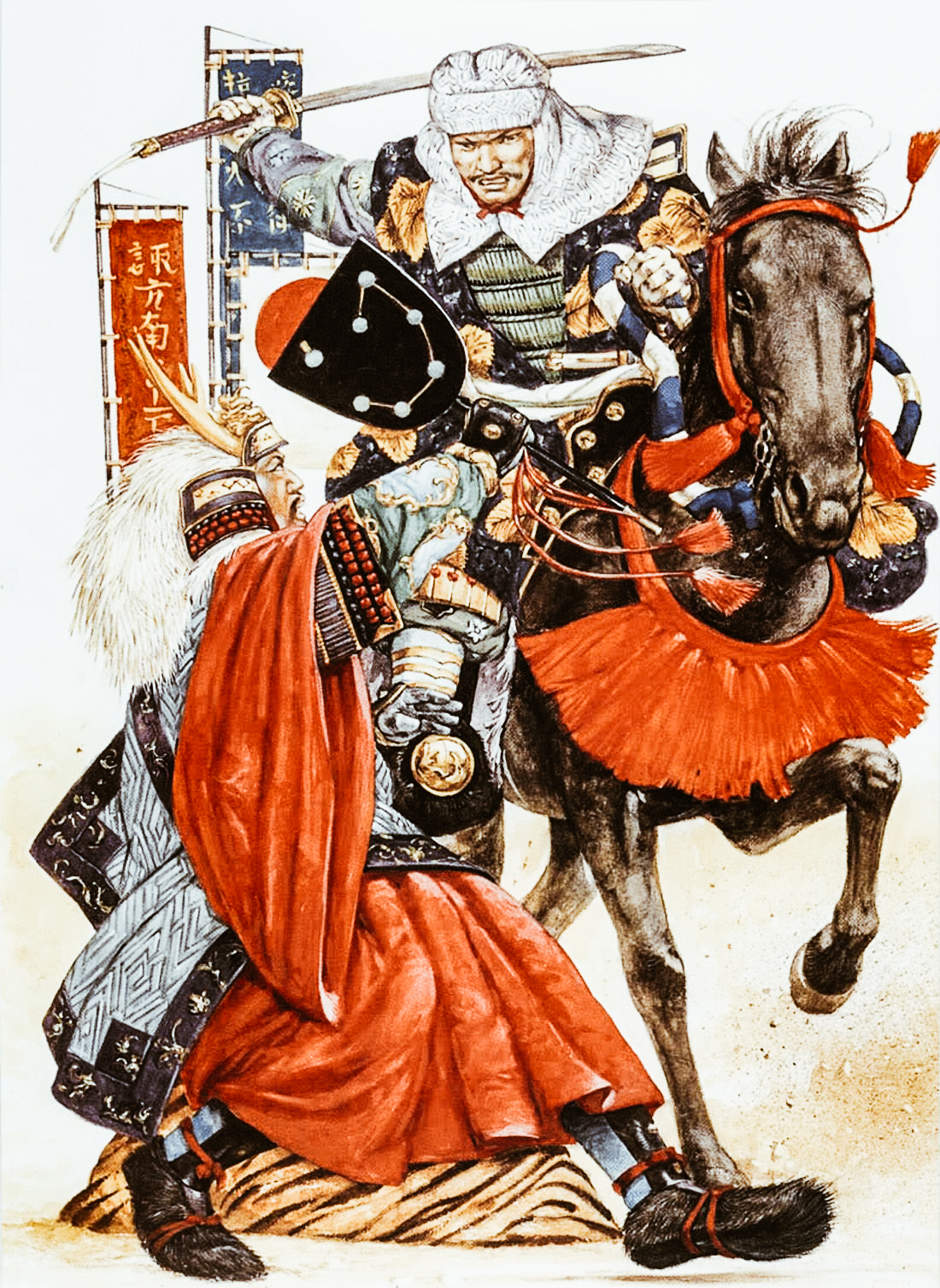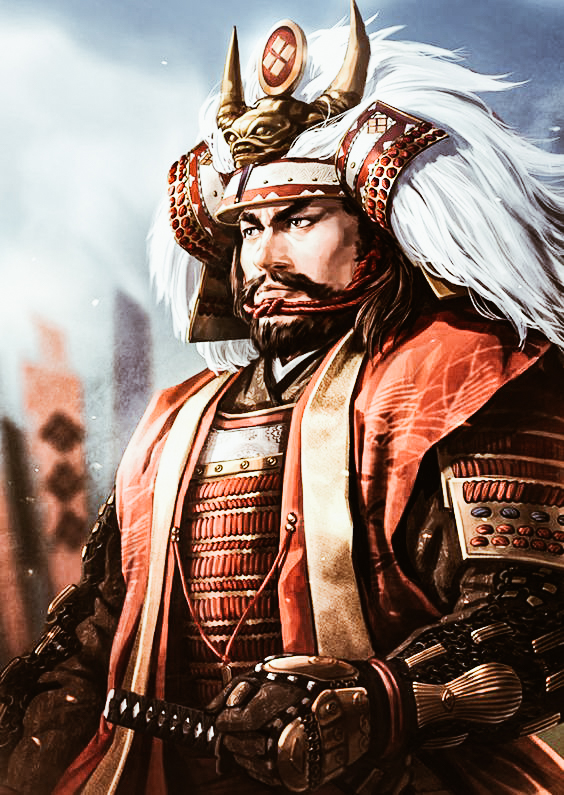Japan History: Takeda Shingen
Takeda Shingen (Takeda Harunobu December 1, 1521 – May 13, 1573), firstborn of warlord Takeda Nobutora, was born in the powerful Takeda clan. He was Shugo Daimyo (military governors) of the then province of Kai, present-day Yamanashi prefecture.
Takeda Shingen played a very important role in the battle of Un no Kuchi in 1536, he was only 15 years old. When his father designated his second son as heir, Shingen conducted a coup without bloodshed. This forced his father to retire as head of the clan. Later, Shingen began to expand his family’s domains northward into the province of Shinano (present-day Nagano prefecture) and into lands adjacent to Kai.
As the undisputed leader of the Takeda clan, he began his expansionist policy starting with the Battle of Sezawa. He then continued with the sieges of Uehara, Kuwabara and Fukuyo, the battles of Ankokuji, Odaihara, Shiojiritoge, and the Kawanakajima battles series against Uesugi Kenshin.
Shingen decided to have all the warriors in the first lines of his armies wear red lacquered armor to intimidate the enemy psychologically. This idea was also later copied by the Tokugawa army clan.

photo credits: japantimes.co.jp
The life of Takeda Shingen
In 1548 Takeda Shingen defeated Ogasawara Nagatoki in the battle of Shiojiritōge and took Fukashi in 1550. Uesugi Kenshin took the field at that time because the Takeda had now reached the borders of his province.
What began was a rivalry that became legendary and that led them to clash in the battles of Kawanakajima. These battles were generally skirmishes, in fact, none of the two daimyō wanted to discover themselves in an all-out battle.
The fiercest battle between the two was the fourth one, during which, according to legend, Uesugi Kenshin managed to break through the Takeda lines and faced Shingen. It is said that Kenshin attacked Shingen with his sword defending himself with his fan (or tessen). Both lost numerous men during the battle. In particular, Shingen lost two important generals, Yamamoto Kansuke and his younger brother Takeda Nobushige.
Takeda Shingen entered the priesthood in 1551, at which time he assumed the Buddhist name Shingen. However, taking religious vows in no way prevented his participation in worldly affairs.
After the fourth battle, Shingen discovered two plots against his life. The first by his cousin Suwa Shigemasa, who was ordered to commit seppuku. While the second, a few years later by his son Takeda Yoshinobu. The latter was exiled to the Toko temple, where he died two years later perhaps by order of his father. After this incident, Shingen appointed his fourth child, Katsuyori as successor to the leadership of the clan.
After conquering Katsurao, Wada, Takashima and Fukuda, in 1554 he returned as many victories in the sieges of Fukushima, Kannomine, Matsuo and Yoshioka.
In 1563, together with Hōjō Ujiyasu, Takeda Shingen conquered Matsuyama Castle in the province of Musashi. Subsequently it obtained the possession of Kuragano in 1565 and of the castle of Minowa. Then he moved against the Hōjō attacking Hachigata castle.
He retired successfully after Hōjō Ujiteru and Hōjō Ujikuni failed to stop him in the battle of Mimasetōge.

photo credits: pinimg.com
Harunobu’s main ambition was the submission of Shinano. However, the resistance in that neighborhood was fierce. A number of Shinano warlords, including Murakami Yoshikiyo, Ogasawara Nagatoki, Suwa Yorishige and Kiso Yoshiyasu, made a move designed with the hope to cut off further Takeda aggressions.
The march towards the Kai borders
In April 1542 the four daimyo combined forces and marched towards the Kai border, encouraged by the news that Harunobu was strengthening his defenses and was preparing to take a stand in Fuchu. In fact, Harunobu’s activities were a ploy. Far from passively waiting in Kai, Harunobu led his men and took the Shinano warriors by surprise, defeating them at Sezawa.
Encouraged by Sezawa’s findings, Harunobu made a trip to Shinano focusing on the territory of the Suwa clan. He first took Uehara in a surprise attack and then moved to Suwa headquarters in Kuwahara, located 2 kilometers to the east. Suwa Yorishige had no choice but to surrender following Harunobu’s promise of safe conduct. Yorishige and his brother were taken to Kai where General Takeda, Itagaki Nobutaka, organized their death. Both of them committed suicide.

photo credits: pinterest.it
Harunobu, with the help of Yamamoto Kansuke’s strategies, further expanded his territory through the defeat of Tozawa Yorichika and Takato Yoritsugu. The acquisition of the castle of Takato was of particular value. Indeed, it provided a safe stopping area in the south of Shinano, as well as a buffer against any southern aggression.
In 1544 the Takeda marched towards Suruga in support of Imagawa and confronted Hōjō Ujiyasu. No real conflict occurred following this confrontation. Harunobu was in fact forced to enter into a peace treaty between Hōjō and Imagawa.
Over the next decade, Harunobu continued to exert incessant pressure on the Shinano warlords. In 1548 Murakami Yoshikiyo, perhaps the most formidable Shinano enemy of Harunobu, moved to Ueda and defeated the Takeda clan in a bitter battle. Here a number of Chinese arquebuses were used, the first weapons of the genre ever deployed in a Japanese battle. While Uehara’s defeat left two of his best generals dead, Harunobu quickly bounced back. In fact, in 1552 the Murakami and Ogasawara clans fled from Shinano to Echigo.
Takeda Shingen vs Uesugi Kenshin
In June and October 1553 the Takeda and Uesugi armies clashed near the Kawanakajima plain in northern Shinano. A clash lasted five times but only the fourth battle produced a wide-ranging race. Both sides suffered heavy losses that slowed both warlords for a few years. In particular, Shingen must have suffered from the loss of Nobushige and Yamamoto Kansuke, both of whom died in the battle.
In 1560 Shingen had discovered a plot against him led by his cousin Katanuma Nobumoto and in 1565 the one organized by his son Yoshinobu and Obu Toramasa. Two years later Yoshinbou died. Legend says that death is due either to illness or, as many believe, because Shingen had forced him to commit suicide. The event left Takeda’s servants uneasy.

photo credits: wikipedia.org
In 1564, Shingen had subdued all of Shinano and turned his attention to Kōzuke, where he took a number of castles from the Uesugi clan. For the next five years, he limited himself to raids and local conquests, focusing on internal affairs.
In 1560, Shingen’s greatest achievement was the Damji River Damming project. The benefit of the Fuji river project is considered one of the greatest national initiatives of the sixteenth century.
In 1568, Takeda’s army was on the move again, this time south against Imagawa. The daimyo of that clan was Ujizane, the incompetent son of the late Imagawa Yoshimoto (killed in 1560 by Oda Nobunaga). Yoshinobu, son of Shingen, had married Ujizane’s sister, but after her suicide in 1567, relations between the families had increased. It would appear that Shingen and Tokugawa Ieyasu had entered into an agreement under which the two would divide the remaining lands of Imagawa (Tōtōmi and Suruga). However, this agreement was never completed. Furthermore, Sagami’s Hōjō did not see this shift in the balance of power. Because of this, he sent troops to challenge Shingen. In 1569 Shingen responded by invading Sagami and besieging Odawara (the capital of Hōjō). However, on the way back to Kai, the Takeda army managed to crush an attempted ambush by Mimasetoge of Hōjō.
Thus, in 1570, the lands of Takeda included Kai, Shinano, Suruga and pieces of Kozuke, Tōtōmi, and Hida. Shingen, at 49, was now more than a regional power. Takeda Shingen was in fact the most important warlord east of Mino. Moreover, he was the only one able to derail Oda Nobunaga’s march to national hegemony. Only Shingen had the strategic position and the armed forces to stop it.
In 1570 the formidable Hōjō Ujiyasu died and his heir, Ujimasa, made peace with Shingen. This was an act that could have ensured Tokugawa Ieyasu final destruction. However, Shingen died in 1573 sending the plans into smoke.
The Takeda clan allies with the Oda clan
Meanwhile, the Takeda and Oda, aimed at controlling the Uesugi clan. After a failed diplomatic courtship, they started a war of words with the shogun Ashikaga Yoshiaki.
Shingen intensified the pressure against Tokugawa and in 1572 launched an attack on Tōtōmi which led to the capture of Futamata. The following January, Shingen returned to the province and attracted Tokugawa Ieyasu at the Battle of Mikatagahara. Conducted on January 6 north of Hamamatsu, it ended with an almost complete defeat for Ieyasu.
Although they were often presented as initial moves in a march on Kyoto, Shingen’s intentions were undoubtedly more conservative. Probably, Takeda Shingen aimed to test the answers of both Ieyasu and Nobunaga and, if possible, inflict a defeat on the two. In any case, within a few days of winning the battle, he received the news that Asakura Yoshikage had chosen not to oppose to Nobunaga. Shingen was sorry and could count on Yoshikage to maintain the tension on Nobunaga. This may have played a part in his decision to return to Kai, thus granting a truce to the bloody Tokugawa.
The figure of Takeda Shingen
Shingen was a complicated figure, sometimes absolutely cruel. At the beginning of his life, he had forced Suwa Yorishige to commit suicide (or murdered him) after the two warlords had signed a peace treaty. He then took Suwa’s daughter as a lover, ignoring the fact that she was technically his own niece.
Apparently, Shingen created Shingen Tsuba, (sword guard) also known as Takeda Tsuba. The story goes that while waiting for a battle to begin, Shingen wrapped the brass wire around a large iron sukashi to keep himself focused and able to think until the battle began. Because of this, many of his vassals followed Shingen’s leadership throughout the Edo period.
He is also credited with inventing the toilet drain, bathroom hygiene, apparently, was important to Shingen. He also built the vast dams known as Shingen Zutsumi along the Kamanashi segments of the Fuji river. These walls prevented flooding and were one of the largest and most ambitious national public works initiatives of the sixteenth century.
The well-considered laws of Shingen were not considered particularly severe. He suspended corporal punishment for most minor crimes. In fact, he adopted a system of financial fines, which earned him the respect and praise of the peasants and citizens of the province of Kai.
It is interesting to note that Shingen also had two large iron cauldrons in which to boil criminals still alive. Tokugawa Ieyasu, thinking that the punishment was excessively cruel, destroyed the cauldrons years later.
His economic reform was also innovative at the time. Indeed, Takeda Shingen taxed most of its subjects uniformly and allowed them the option of payments in gold or rice.
Takeda Shingen had planned on the districts of Mikawa and Owari (now both Aichi Prefecture). In 1571 he entered the territories of the Okudaira clan (later Tokugawa) and captured the castle of Noda.
In 1573, he invaded Mikawa and again attacked the castle of Noda. However, this time, the fortifications of the castle had been strengthened, allowing it to stand for several weeks.

photo credits: wikimedia.org
The death
On May 13, 1573, towards the end of the siege, just before the defenders of Noda Castle capitulated, Takeda Shingen was shot by a marksman. Shingen died during the escape.
The death of Takeda Shingen at the age of 49 remained a secret. The remains of the gun that was used to shoot Shingen are kept in the Shitagahara Museum in Nagashino, Aichi Prefecture. His son and successor, Takeda Katsuyori, was defeated by Oda and Tokugawa in the early 1580s, thus ending the power of the Takeda family.
Instead of a poem of death, he left the following words, borrowed from Zen literature: “It is largely left to its natural bodily perfection, and has no special need to resort to artificial coloring and powder to look beautiful. “
Share this:
- Click to share on Facebook (Opens in new window)
- Click to share on Twitter (Opens in new window)
- Click to share on Tumblr (Opens in new window)
- Click to share on Pinterest (Opens in new window)
- Click to share on Telegram (Opens in new window)
- Click to share on WhatsApp (Opens in new window)
- Click to share on Reddit (Opens in new window)
- Click to print (Opens in new window)






